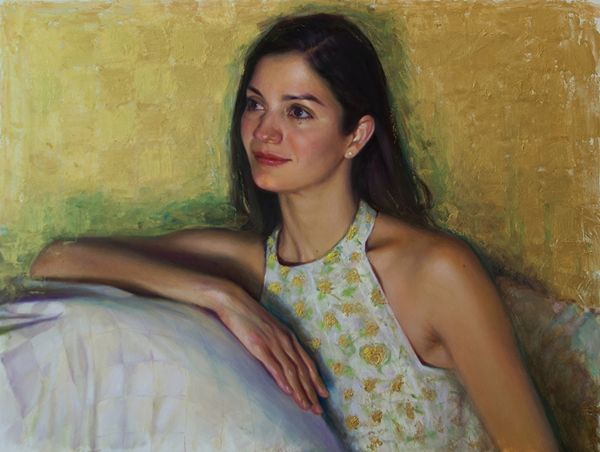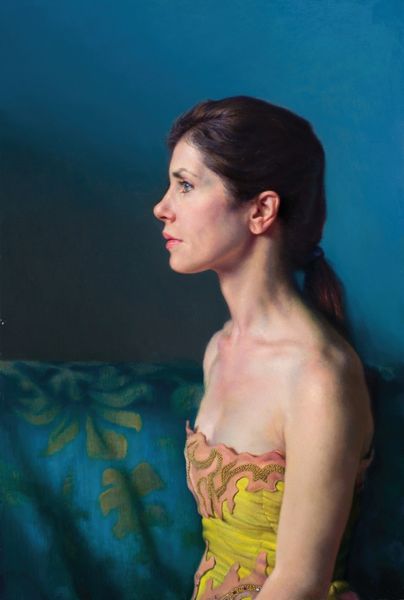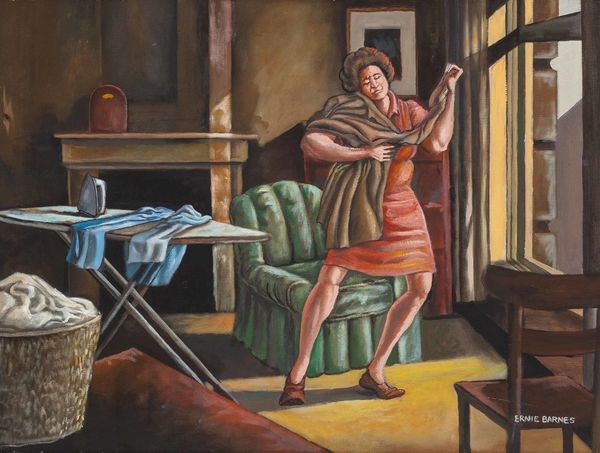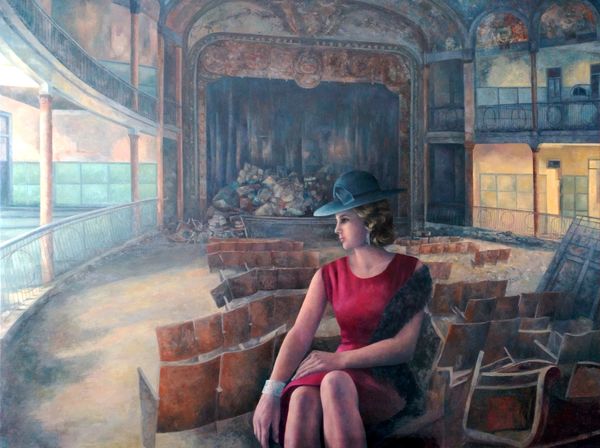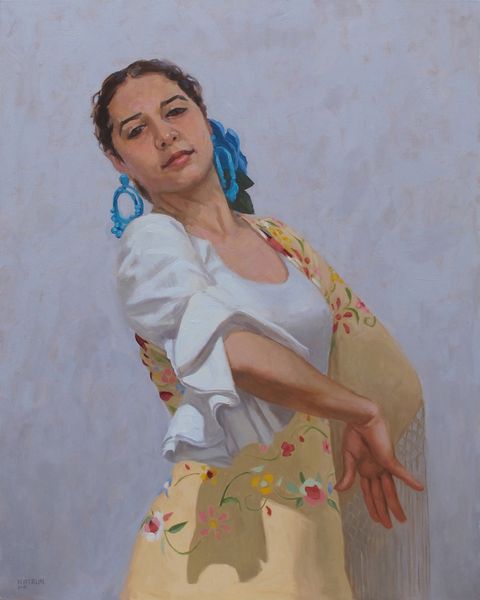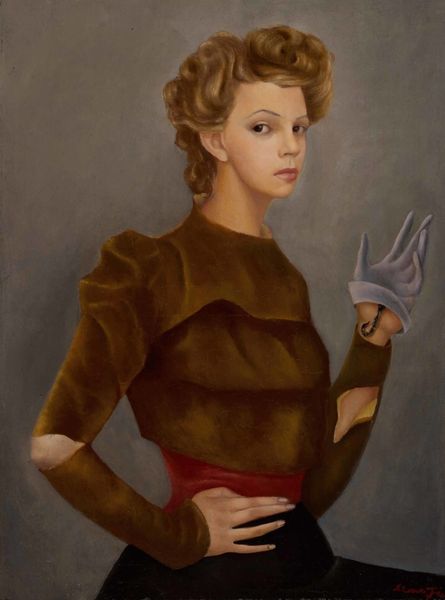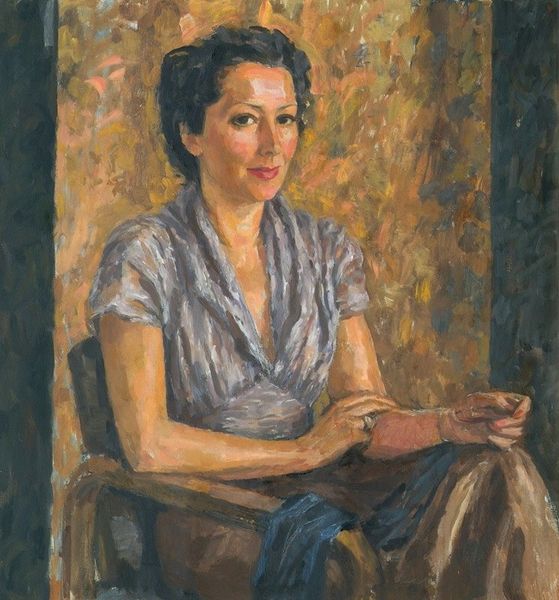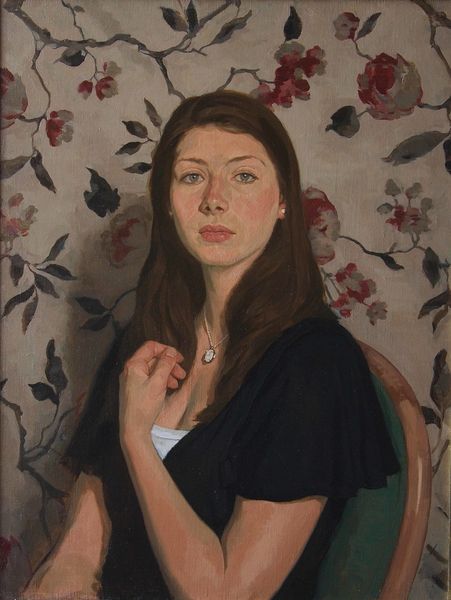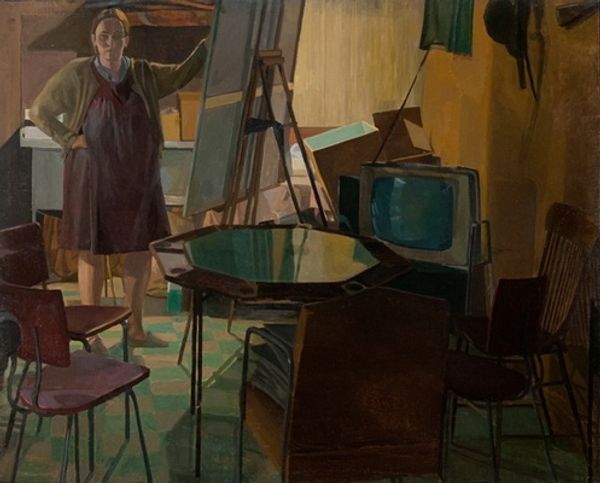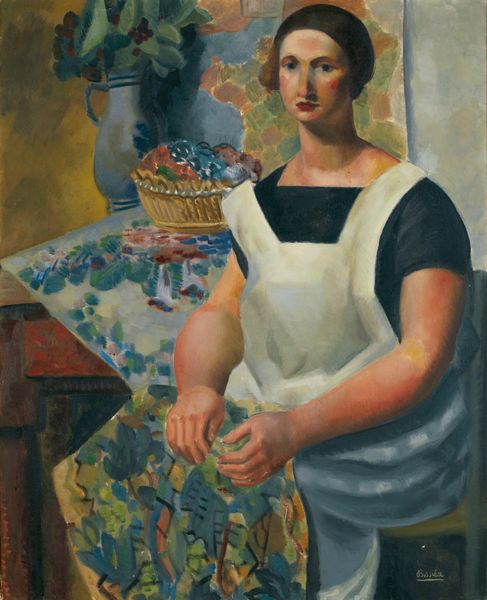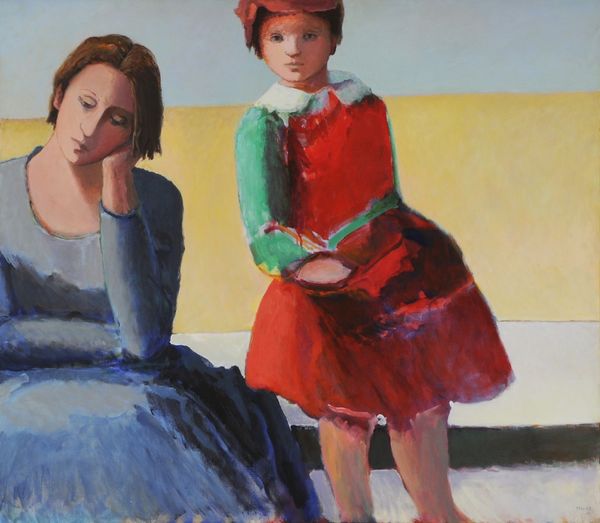
oil-paint
#
portrait
#
gouache
#
oil-paint
#
painted
#
oil painting
#
realism
Copyright: Modern Artists: Artvee
Curator: I'm drawn to the artist Melissa Hefferlin's "Portrait of Victoria Kalaichi." The soft light and muted colors create a calm, almost melancholic mood, wouldn't you agree? Editor: It’s certainly evocative, yes. Notice the formal device of the canvas on the right displaying the portrait that Victoria seems to be working on; it sets up an interesting dynamic—portraiture and the artist. It adds depth through this embedded mise-en-abyme. Curator: Indeed. Considering Hefferlin's practice, it's compelling to view this portrait through the lens of contemporary discussions on the role of women in the arts, as both subject and creator. How often are women painted by male artists and rendered passive or idealized? Here, Victoria is an active artist, holding her brush, her gaze thoughtful. Editor: And she seems aware of us watching her! Let's also note how the oil paint’s materiality, worked into a very controlled range of tones, becomes its own representational language. The structure, even in the backgrounded teapots and the vase of flowers, shows such deliberate construction. Curator: I find the inclusion of what seems like a samovar and other metal teaware intriguing. Are they a hint towards her identity or cultural heritage? Editor: Well, cultural readings are vital; let’s recall how, since the Renaissance, certain objects have symbolized wealth and status. While not always explicit, art often reflects social class and gender roles through visual signifiers. Consider how similar compositions through history are tied to patriarchy. Here, it looks… softer, more muted. The traditional gaze is somehow questioned, don't you think? Curator: It certainly complicates it! Perhaps a challenge to that historic hierarchy? I appreciate that complexity here, avoiding a simple dichotomy. Editor: I agree entirely. Through its visual construction and engagement with tradition, it invites continuous inquiry into who is creating and the role social constructs play. It asks us to contemplate our interpretations and acknowledge those systems of meaning. Curator: Ultimately, a reminder that the power of a portrait lies not just in the representation of the sitter, but also in its power to speak to us about the context and the act of its creation. Editor: Indeed. Its aesthetic strategies provoke these types of discourses! A subtle, and yet compelling work.
Comments
No comments
Be the first to comment and join the conversation on the ultimate creative platform.
